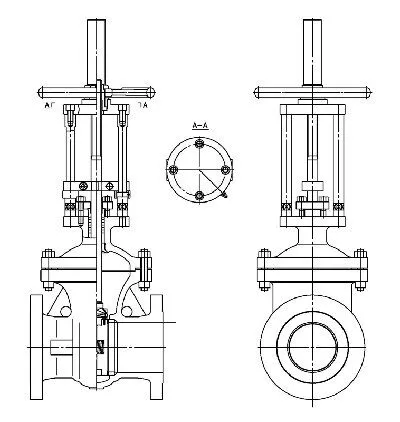Parallel Gate Valves: Key Types and Their Features
On this page
Parallel gate valves play a critical role in industrial pipeline systems, demonstrating exceptional performance across various applications due to their unique parallel sealing surface design. This design not only enhances fluid control precision but also effectively handles different pressure conditions. Parallel gate valves can be categorized into two main types based on the number of discs and sealing mechanisms: single disc and double disc. Each type offers distinct advantages and applications, accommodating a range of pressure requirements from low to high.

Single Disc Parallel Gate Valve
The single disc parallel gate valve consists of a single flat disc with polished surfaces on both sides. Its simple structure makes it easier to manufacture and process. However, this design does not achieve forced sealing through its own structure, leading to significantly reduced sealing performance under low differential pressure conditions. To improve sealing at low pressure differentials, soft sealing materials—either fixed or floating—are often used on the valve body and seat. This type of valve is suitable for medium and low pressure pipelines, particularly for those carrying oil, gas, or natural gas with medium to large diameters.
Double Disc Parallel Gate Valve
The double disc parallel gate valve has a more complex design and is divided into two main structures: automatic sealing and expanding types. Each has specific characteristics and applications.
1. Automatic Sealing Double Disc
The automatic sealing double disc valve utilizes the medium pressure to press the discs against the sealing surface on the outlet side of the valve seat, achieving single-side sealing. However, sealing performance may be unstable at lower medium pressures. To address this, a pre-tightening spring is often incorporated into the design. When the valve is closed, the spring is compressed to assist in sealing through its pre-tightening force. While this design helps clean the sealing surface, it increases friction, which may cause wear on the sealing surfaces and shorten the valve’s lifespan.
2. Expanding Double Disc
The expanding double disc structure is more intricate, with common designs including the top wedge type and the double slant type.
Top Wedge Type
The top wedge type parallel double disc valve can be divided into upper wedge and lower wedge designs.
Upper Wedge Type
Structure: A wedge is installed between the two discs and connected to the valve stem. When closing the valve, the discs descend to the bottom of the valve body, and the valve stem continues to push the wedge downward. The wedging force of the wedge expands the discs to press against the valve seat on both sides, creating a sealing force.
Opening Process: The valve stem lifts the wedge, releasing the pressure on the discs, which then rise to open the valve. This design minimizes friction between the discs and the valve seat, making it suitable for low-pressure, medium to small diameter valves.
Lower Wedge Type
Structure: Similar to the upper wedge type, but the direction of the wedge is reversed. When closing, the valve stem moves the discs downward until the lower wedge contacts the bottom of the valve body. The stem then continues to move the discs downward, with the lower wedge expanding the discs to create a sealing force.
Opening Process: The lower wedge remains in place between the discs by its own weight, and as the valve stem rises, the discs separate from the valve seat, opening the valve. Improper design or excessive force when closing the valve may prevent the lower wedge from fully separating, increasing the valve opening torque.
Double Slant Type
The double slant type parallel double disc valve consists of primary and secondary discs with complementary slanted surfaces. It features a connecting rod and swinging block mechanism, with the ends of the connecting rod linked to the primary and secondary discs via pins.
Closing Process: The valve stem moves the secondary disc to the fully closed position, limited by a step in the valve body. The primary disc continues to move under the valve stem's force. The slanted surfaces expand the discs to press against the valve seat, creating a sealing force. The pin on the primary disc drives the connecting rod, allowing the swinging block to detach from the guiding ribs and avoid interference with the disc expansion.
Opening Process: The valve stem moves the primary disc, which drives the connecting rod and swinging block. As the primary disc continues to move, the swinging block engages with the guiding ribs, causing the secondary disc to move toward the primary disc, and both discs are lifted to open the valve. This structure effectively achieves sealing while significantly reducing wear on the discs and valve seat, thus extending the valve's service life.
Parallel gate valves, with their parallel sealing surface design and various disc structures, play a vital role in industrial pipeline systems. Whether utilizing a simple single disc structure or a more complex double disc design with automatic sealing or expanding features, these valves meet diverse application needs. Understanding the characteristics and designs of these valves can help in selecting the most suitable parallel gate valve to ensure efficient and reliable performance under specific working conditions.

